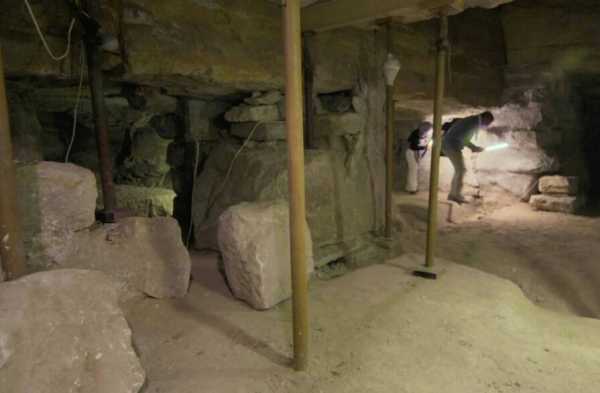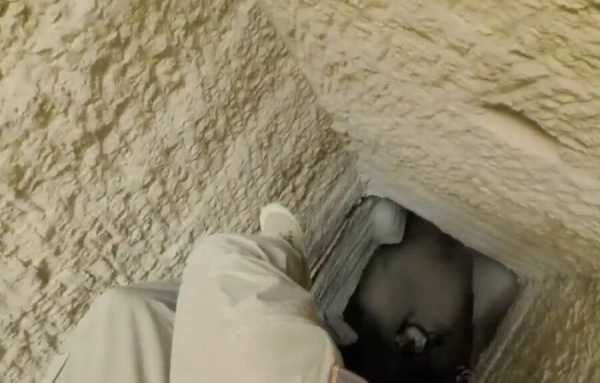The funerary complex is complete with a mummification workshop featuring natural ventilation.

National GeographicThis is just one of the dozens of mummies discovered in the ancient funeral complex, where over 50 in all sorts of conditions were found buried.
The excavation took months and the removal of 42 tons of fill but ended in the discovery of a 40-foot shaft and large chamber with high ceilings. Thousands of pottery fragments, shallow channels cut into the bedrock, and a table-like area were found. The network of passages provided a cool breeze.
Hussein quickly found this wasn’t a typical tomb, but a workshop to mummify people, designed with drainage channels, natural ventilation, and an industrial-strength incense burner to ward off the animals.
“If you’re doing evisceration down there, you need air moving in to get rid of insects,” said Hussein. “You want constant movement of air when you’re dealing with cadavers.”
The pottery fragments, which were carefully documented and conserved, only further clarified the purpose of this place.
“Every single cup or bowl has the name of the substance it held, and the days of the embalming procedure it was used,” said Hussein. “Instructions are written directly on the objects.”

National GeographicThe range of burials spanned from the more wealthy, who were adorned with gold and silver burial masks, to those buried in wooden coffins with nary a personal item by their side.
“It was a huge industry,” said Hussein, with discount packages available to suit every budget.
From evisceration of the bodies to burials and maintenance of the deceased’s souls, this ancient undertaker business was vertically integrated and offered customers the whole experience. Hussein and his team discovered a second shaft leading to another room housing six tombs and 50 mummies.
One held a woman in a limestone sarcophagus weighing over seven tons. Another held a woman whose face was covered with a gold and silver burial mask — the first one found in Egypt in over 100 years. The complex of tombs also held more humble, working-class individuals in wooden coffins.
Hussein posits the embalmers accepted either money or parcels of land for their work. They would first pack the bodies in the burial shaft, then collect their fee, and continue their agreed-upon services.
Ultimately, this is the first time that archaeological evidence definitively confirms what has only been theory based on inscriptions and ancient legal documents. On top of that, it’s a welcome pivot from focusing only on the fanciest, most royal tombs, to how the ancient Egyptian masses interacted with death.
“Ramadan is getting a lot of information that was simply lost in the past,” said Raue. “There was a whole infrastructure above ground that was simply removed without documentation.”
After learning about the ancient Egyptian “funeral home” and mummification workshop uncovered in Saqqara, read about the pyramid of Djoser — Egypt’s oldest and largest. Then, learn about 44 ancient Egyptian facts that separate myth from truth.
Sourse: www.allthatsinteresting.com





